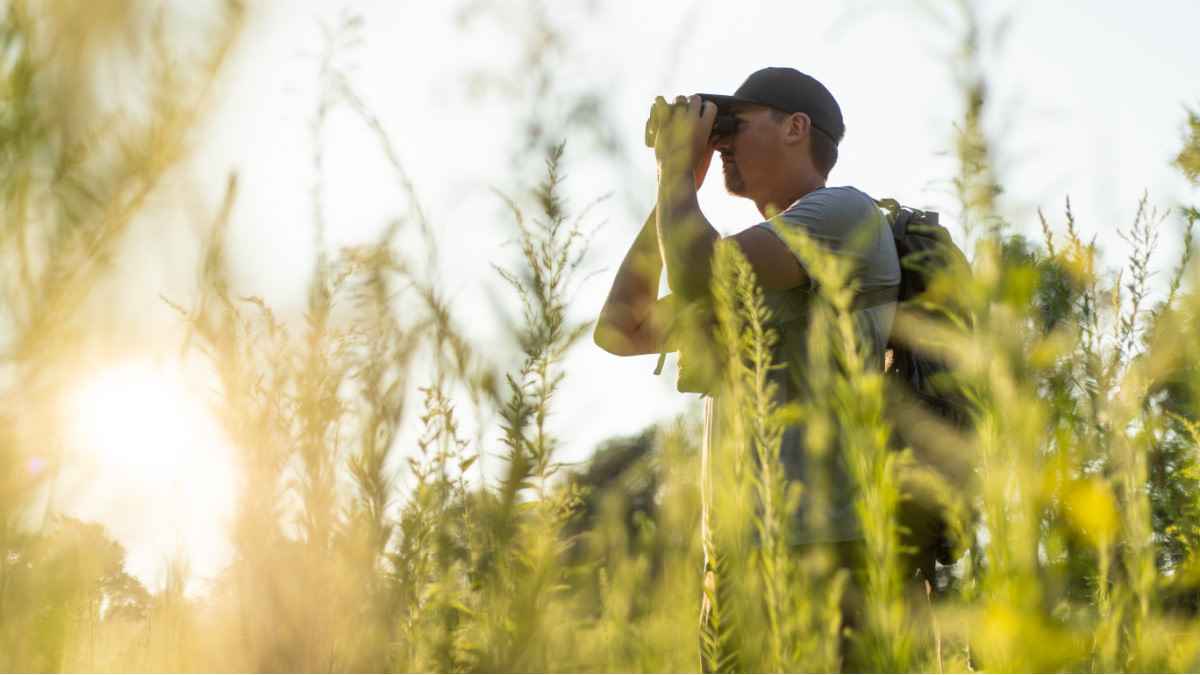
In every state, hunters kill an average of 55% to 65% of the Pope & Young record bucks during the season’s abbreviated rut phase periods. That stat being what it is, it makes sense to scout during the post-season when the rut sign is still visible (scrapes, licking branches, runways in bedding areas, rubs) and the foliage in the trees is down. This way you are looking at the area in the exact state it will be in during the upcoming rut.
By the late 1970s, I’d learned that there was a tremendous advantage in getting all my scouting and location preparation done after the snow melted, prior to the spring green-up. In my home state of Michigan, that is sometime between mid-March and the end of April.
With that said, if I’ve picked up a new property or want to check out a new chunk of public land, that forces me to scout the property right before the season.
In addition to the summer heat, the difficulty with summer scouting is that the full foliage has covered up the previous season’s rut sign. You won’t be able to scout as thoroughly as you would in early spring, but with some effort you can speculate what the deer activity will be like in the fall.
I use the word “speculate” because summer deer activity is completely different than rut phase deer activity. In heavily pressured areas, any mature buck will alter his movement patterns dramatically as the hordes of hunters do their pre-season scouting and location preparation. The days shorten, the foliage withers and falls, and the weather turns cold.
A well-used summer travel route may become completely absent of deer activity by the time pre-rut arrives or as the preferred food sources change. That happens with the falling of mast among big timber and crop harvest in agricultural areas.
If you’re pursuing mature bucks in heavily pressured areas, you should always concentrate your scouting efforts around security cover and whatever the preferred food source may be during the rut. All mature buck activity during the rut phases revolves around doe activity, and the heaviest doe activity will be around preferred food sources. And again, for any chance of taking a mature buck in a busy area, the kill zone must have the adequate security cover for a daytime visit.
I’m not referring to the many fantasyland TV properties where bucks are taken in open, vulnerable food plots and crop fields because they were never targeted before reaching the age kill criteria of the managed property. I’m talking about real areas where lots of hunters hunt and the deer act like real deer.
The later in summer, the more cautious you have to be within and around bedding areas. A buck that gets spooked once in July or early August will have time to resume his routine by hunting season. However, a mature buck spooked in late August or early September could enter a nocturnal routine and remain in that routine until his testosterone rises and the rut phase begin.
You should also consider scent control when scouting in late summer. The closer it is to hunting season, the smaller the human footprint you want your scouting intrusions to leave. Human odor is the most impactful footprint you can leave behind.
Ultimately, your scouting goal is to remain as undetected as possible. Scout during midday when the deer are least active. They’ll will be doing the same thing that you wish you were doing—lying in the shade and relaxing.
As you get closer to hunting season, you need to be more careful about scouting during midday. Take some precautions for the heat. Carry enough water and move slowly and you will remain somewhat comfortable. You can also do your summer scouting in inclement weather. High winds or a steady, warm rain will aid in masking your intrusion and will also keep you cool.
You should do your summer scouting and location preparation as soon as possible when you get new opportunities on new properties. But remember that any scouting you can do in late winter and spring should be done during that time, and summer scouting of a new property should be your last resort. The longer your hunting properties remain undisturbed before you hunt them, the better.
Depending on when the state’s opener lands, most other hunters will start thinking about hunting, and busting through the brush to get ready for the upcoming season, in late August or early September. This sudden influx of human activity in woods that have been human-free since winter (other than maybe a little turkey hunting) will alert the mature deer of the upcoming season. They will react accordingly by making themselves less vulnerable during daylight hours.
If you play your cards right, you will be way ahead of the game and your remote hunting areas will remain undisturbed. They might even benefit from other hunters pushing deer into a pattern that involves your area, and you can relax while the others are just getting started.
Feature image via Captured Creative.






